Just like Rocky Mountain National Park in the USA, the Canadian Rockies are an absolutely stunning travel destination. Dramatic mountain peaks, crystal clear blue lakes, and scenic hikes make this area one of the most beautiful places in the world. This 3-day Canadian Rockies itinerary will cover all the best things to do in Calgary, Banff National Park, and beyond.
Disclosure: Some of the links below are affiliate links. When you purchase through links on my site, I may make a small commission (at no extra cost to you!).
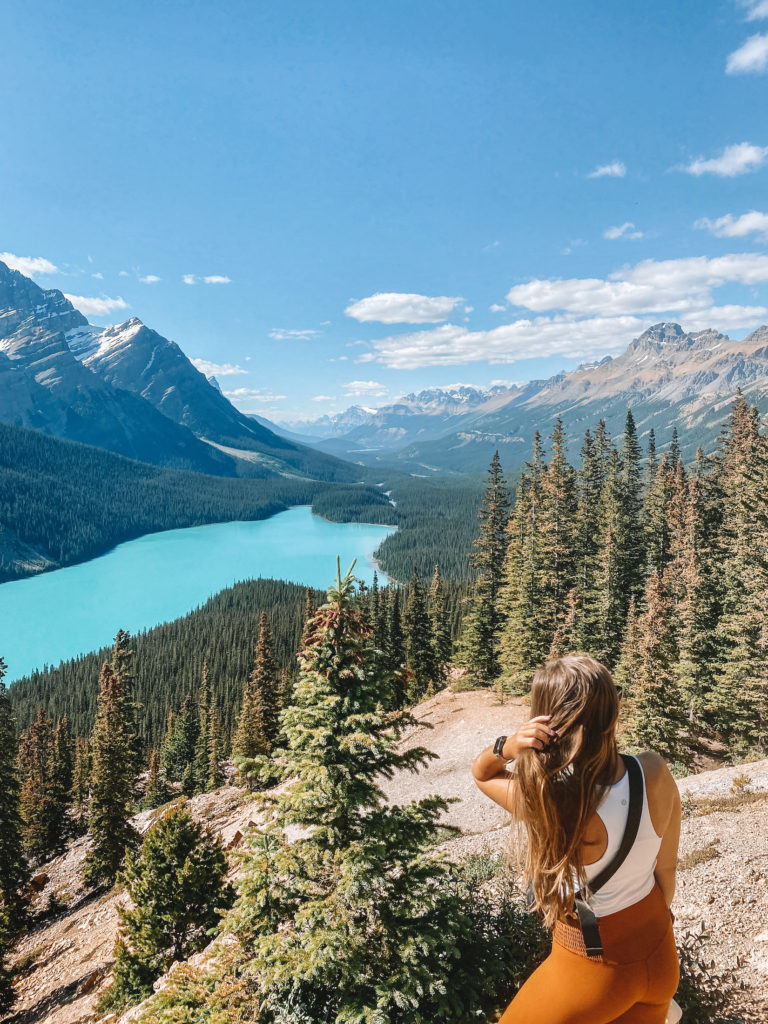
Canadian Rockies itinerary overview
There are actually four Canadian Rocky Mountain National Parks — Banff, Jasper, Kootenay, and Yoho. Because this itinerary is so short, we’ll be focusing our time in Banff National Park, the most popular of the four. Here’s a quick overview of our trip itinerary.
Day 1 — Explore Calgary and Banff town
Canadian Rockies itinerary day 2 — Sunrise at Moraine Lake and drive down Icefields Parkway
Day 3 — Lake Louise and drive back to Calgary
The way this itinerary is set up, booking accommodation in the town of Lake Louise makes the most sense. I’d recommend staying in Lake Louise over staying in Banff because it makes the early morning wake ups much more manageable! (The two towns are 57 km/35 mi apart, which is about a 40 minute drive — extra excruciating at 3 in the morning.)
How to get to the Canadian Rockies
If you’re flying in, Calgary International Airport (YYC) is the closest option. The airport is located about 17 km (10.5 mi) from downtown Calgary and 144 km (89 mi) from the town of Banff. There is no airport in Banff itself.
Book a flight to Calgary
By car
Renting a car is the fastest and easiest way to get to Banff National Park from Calgary. We rented a car from Enterprise and had a great experience. Pro tip: the Calgary Northeast location is very close to the airport but ended up being way cheaper because it’s not the official “airport” location!
Once you have your rental car, it’s a one and a half hour drive to Banff down the Trans Canada highway (Highway 1). Alternatively, you could take the Bow Valley Parkway (Highway 1A) to Canmore before rejoining Highway 1. This more scenic route takes about an hour and forty-five minutes.
By bus or shuttle
There are several different shuttle options to get from Calgary to Banff for those that don’t want to (or aren’t old enough to) rent a car.
Brewster Express — Offers departures from Calgary Airport and downtown Calgary to your hotel in Banff. Adult tickets cost CA$74 one-way or CA$148 round-trip.
Banff Airporter — The quickest rides and most extensive schedules from Calgary Airport to Banff. Adult tickets cost CA$78 one-way or CA$156 round-trip.
RTB Tours — Daily departures from the airport and several locations around downtown Calgary to Banff. From the airport, adult tickets cost CA$62 one-way or CA$110 round-trip. From downtown, adult tickets cost CA$44 one-way or CA$84 round-trip.
On-It Regional Transit — Available on summer Fridays, Saturdays, Sundays, and holiday Mondays, this shuttle runs from downtown Calgary to Banff and only costs CA$10!
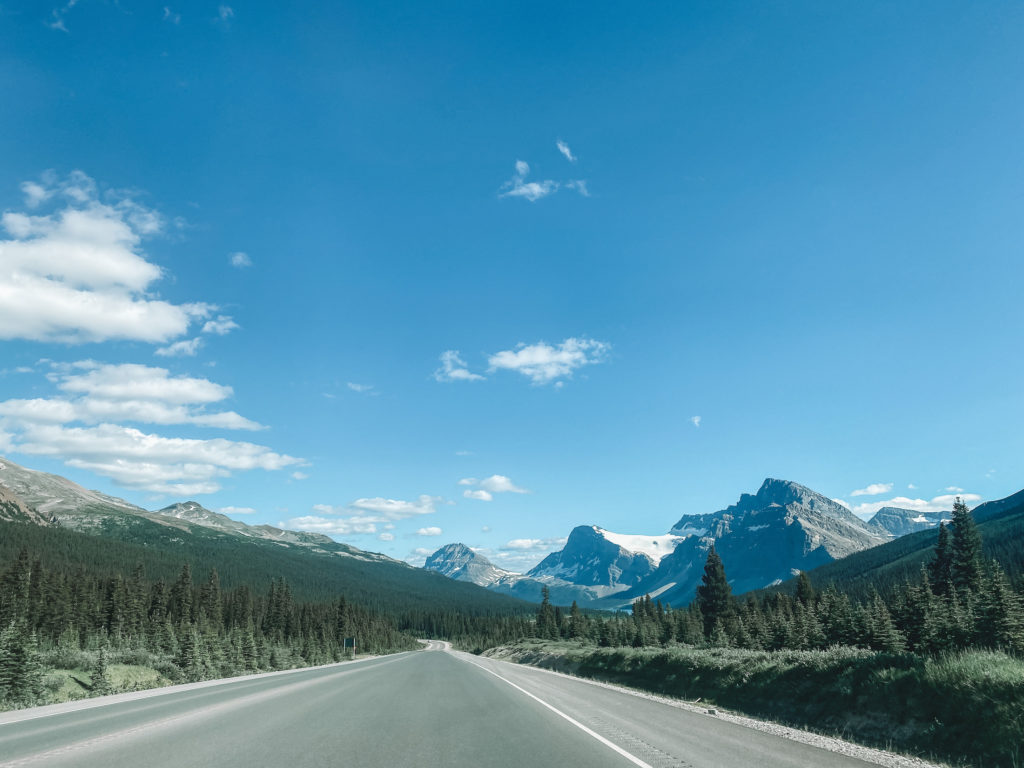
3-day Canadian Rockies itinerary
Day 1: Arrival & city exploration
Because most attractions in Banff National Park require a super early start to secure a parking spot, the first day of your Canadian Rockies road trip itinerary will be spent exploring Calgary and Banff.
Calgary
Calgary is the largest city in the province of Alberta and the third-largest city in Canada. It’s famous for hosting the Calgary Stampede, a rodeo and multi-day festival that draws in millions of visitors every year.
Things to do in Calgary:
- Calgary Tower: Get tickets up to the observation deck for panoramic views of downtown Calgary!
- Olympic Plaza: A lovely urban park built to celebrate the 1988 Olympic Winter Games
- Prince’s Island Park: Green space along the Bow River with picnic areas and walking trails
- Chinatown: Stop for some delicious food or bubble tea
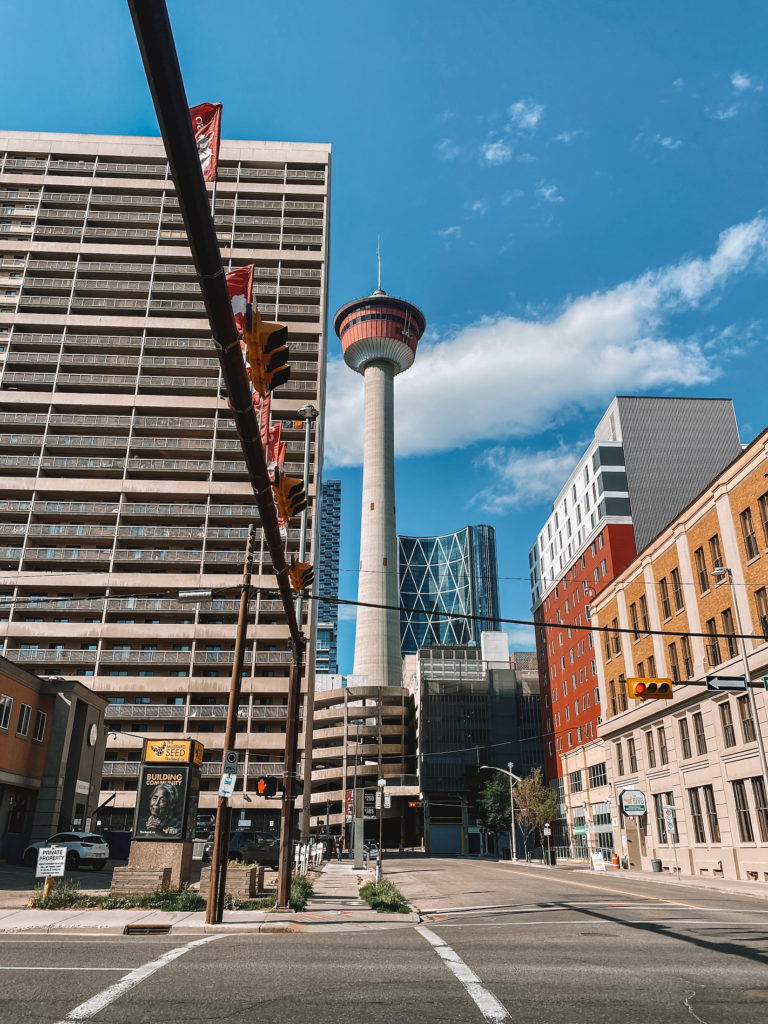
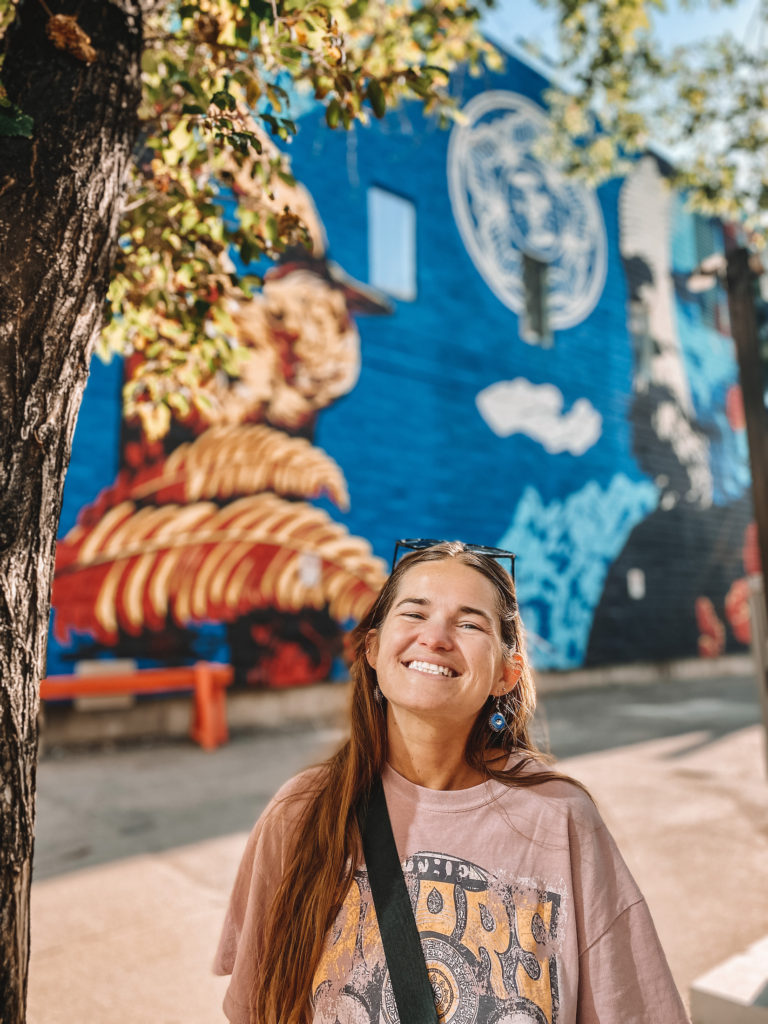
Banff
Once you’ve explored a bit of Alberta’s Wild West City, start your drive to Banff National Park. Before heading into Banff town, make a stop at Lake Minnewanka. This glacial lake is great for swimming and relaxing, and also has a handful of hiking and cycling trails. If you’re feeling up for it, you can also book a scenic boat cruise along its shores.
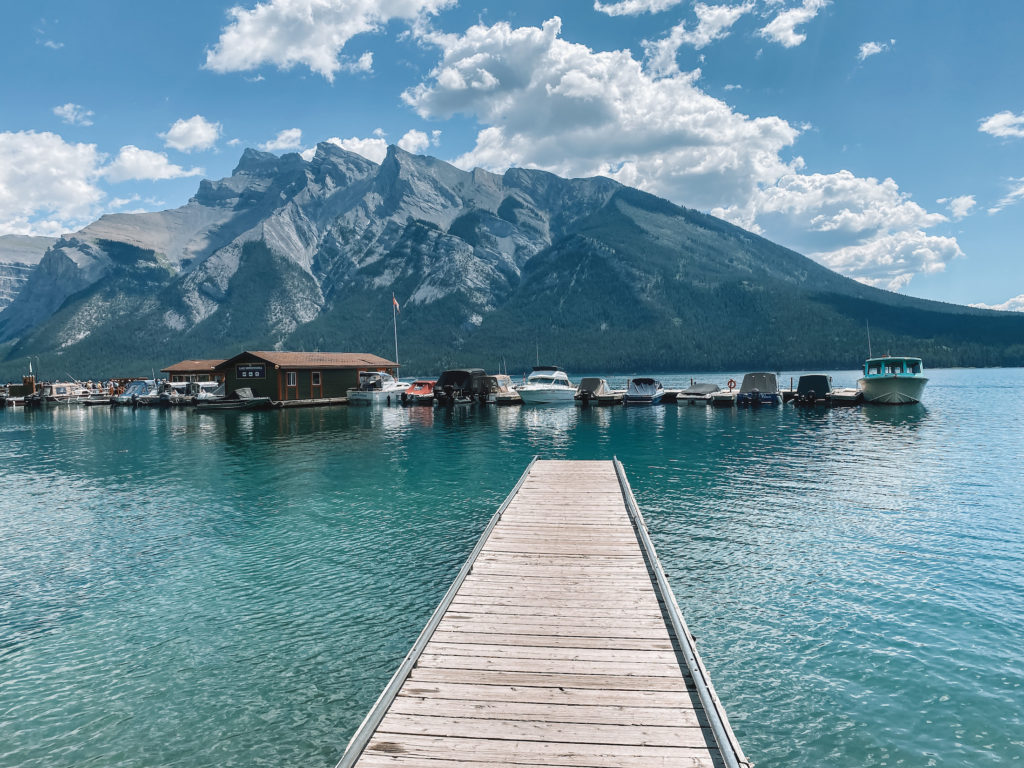
From Lake Minnewanka, Banff town is only a 15-minute drive away.
Things to do in Banff:
- Banff Gondola: Cable car ride with awesome mountain views
- Tunnel Mountain Trail: Easy 2-hour hike near downtown Banff
- Hoodoos Viewpoint: Scenic spot with views of Mt Rundle
- Banff Upper Hot Springs: Thermal mineral springs with a 1930s bathhouse
By this time, you should be able to check in to your accommodation in Lake Louise. Try to have an early night because you’ll be waking up very early tomorrow morning!
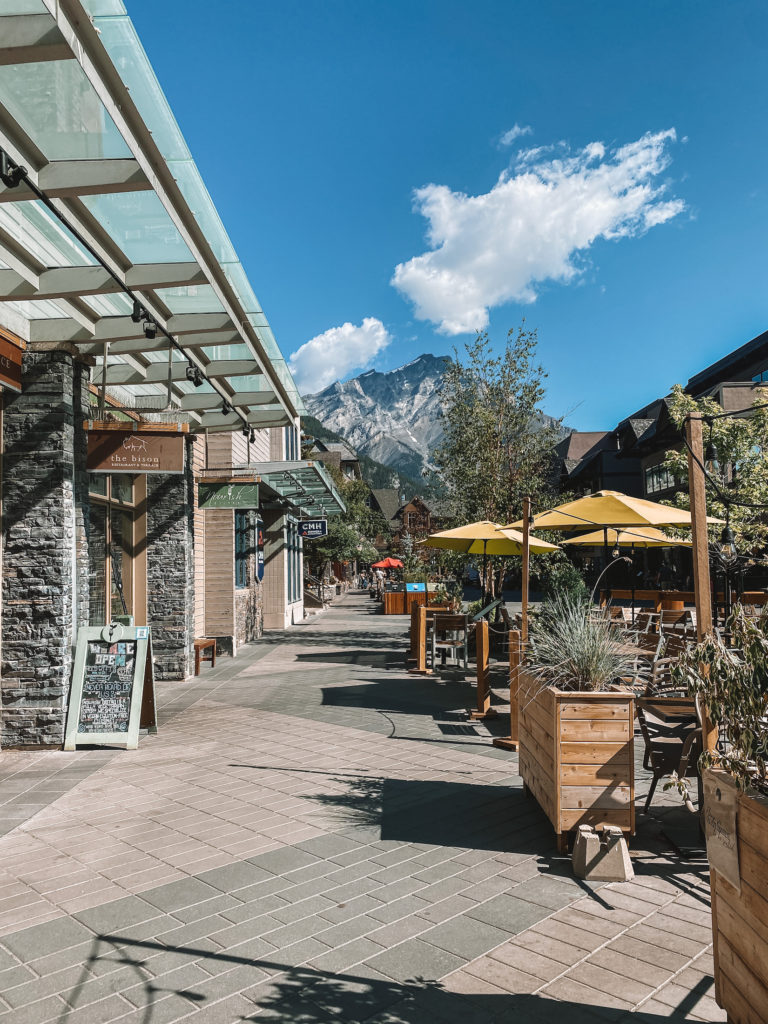
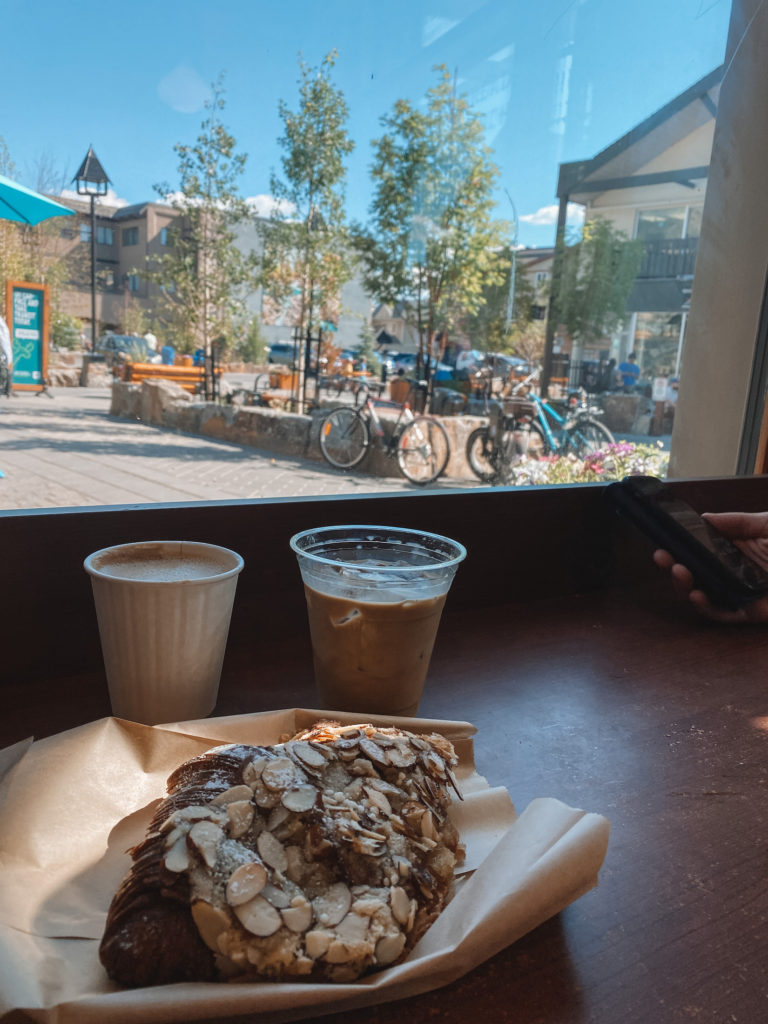
Day 2: Lakes, viewpoints, & a scenic drive
Moraine Lake
Moraine Lake (especially at sunrise) is said to be one of the most beautiful places on Earth. The name itself is basically synonymous with Banff National Park and it’s one of the most popular spots to visit in the park.
Unfortunately, we tried to visit Moraine Lake 3 separate times and were unsuccessful (once at 6 am, once later that day at 7 pm, and once at 3:45 am). I repeat — we tried to visit Moraine Lake at 3:45 am and the parking lot was already full. It was the most chaotic and crowded National Park experience of my life.
If you’re visiting during peak season, get there early. VERY EARLY! Or better yet, plan your Canadian Rockies trip during the late spring, autumn, or winter.
If you don’t want to wake up at an obscene hour (I don’t blame you), your other option is to purchase a Lake Louise/Moraine Lake shuttle pass. Make sure to book in advance because these definitely sell out — they did for the dates we needed. If you didn’t manage to get one in advance, they do release a limited number of passes at 8 am, two days before your scheduled departure.
As the name suggests, the shuttle pass gives you access to both Moraine Lake and Lake Louise. If you managed to book a spot on the shuttle, you can rearrange this itinerary to see both of the turquoise lakes on the same day.
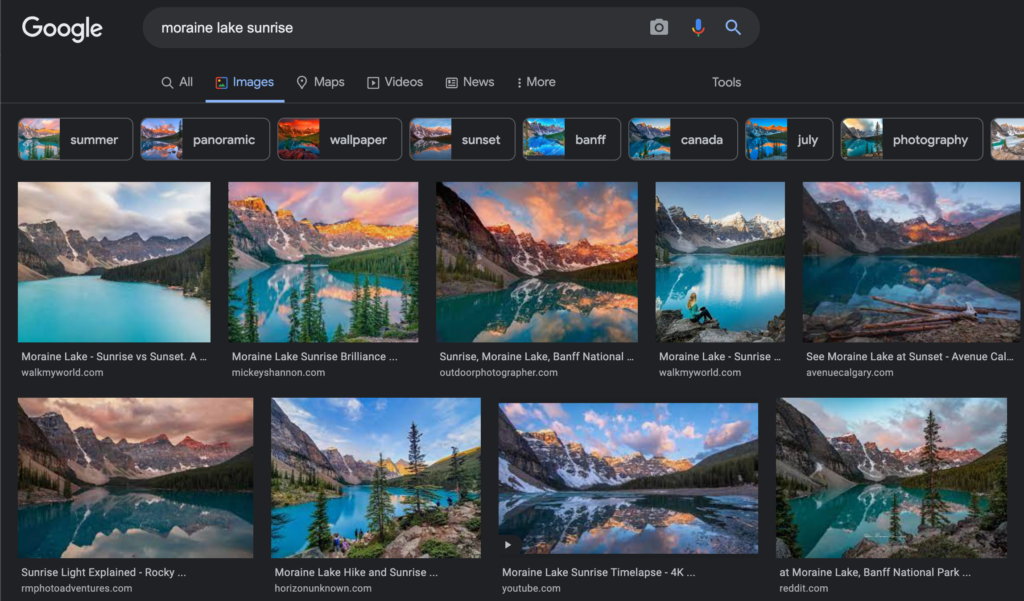
Icefields Parkway
Luckily for us, Banff National Park has a lot more to offer than just Moraine Lake. Icefields Parkway is a scenic, 232 km (144 mi) stretch of road that runs through Banff and Jasper National Parks. Similar to Going-to-the-Sun Road in Glacier National Park, the Icefields Parkway (Highway 93) is considered one of the most beautiful drives in the world.
Best stops along the Icefields Parkway:
- Johnston Canyon: Gorge with a waterfall and an easy hike leading to the Ink Pots, a group of colorful mineral pools
- Bow Lake: Picturesque lake with views of the surrounding mountains and glaciers
- Peyto Lake: My personal favorite spot, a bright turquoise lake with several short hikes in the surrounding area
- Athabasca Glacier: The most-visited glacier in North America
- Athabasca Falls: Massive waterfall on the Athabasca River
- Columbia Icefield: Do the Skywalk, a 1 km (0.6 mi) walk to a glass-floor observation platform
Spend the rest of your second day in the Rocky Mountains by taking in the beautiful views on this scenic drive. You have enough time today to do one of the many day hikes in the Lake Louise area.
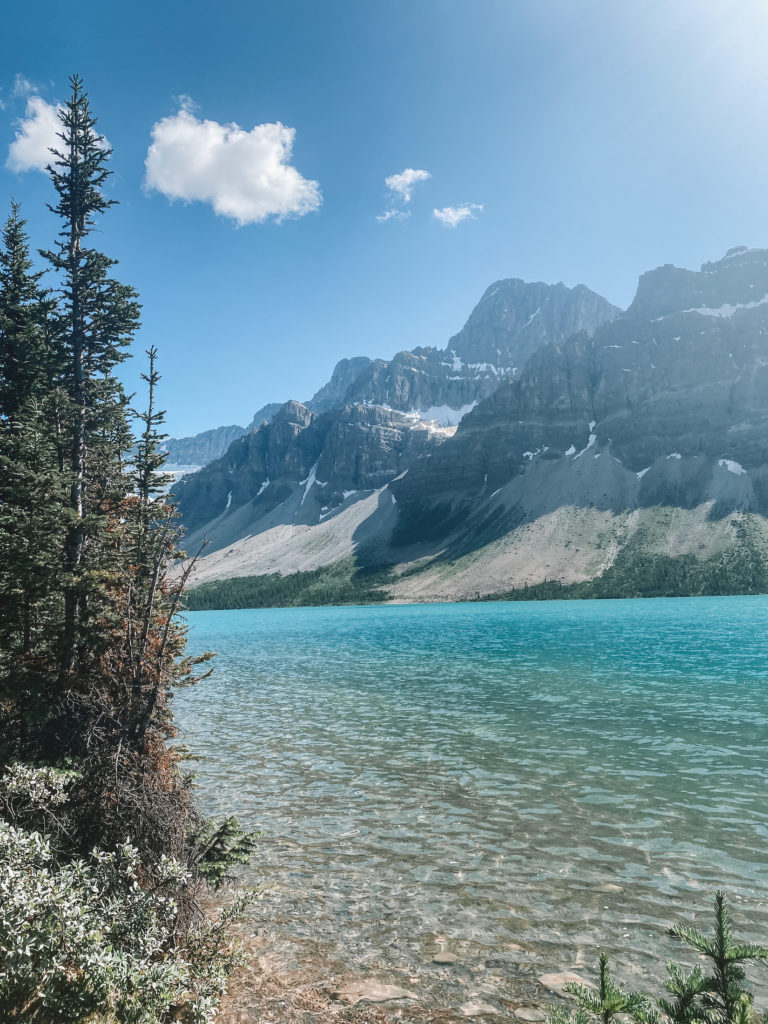
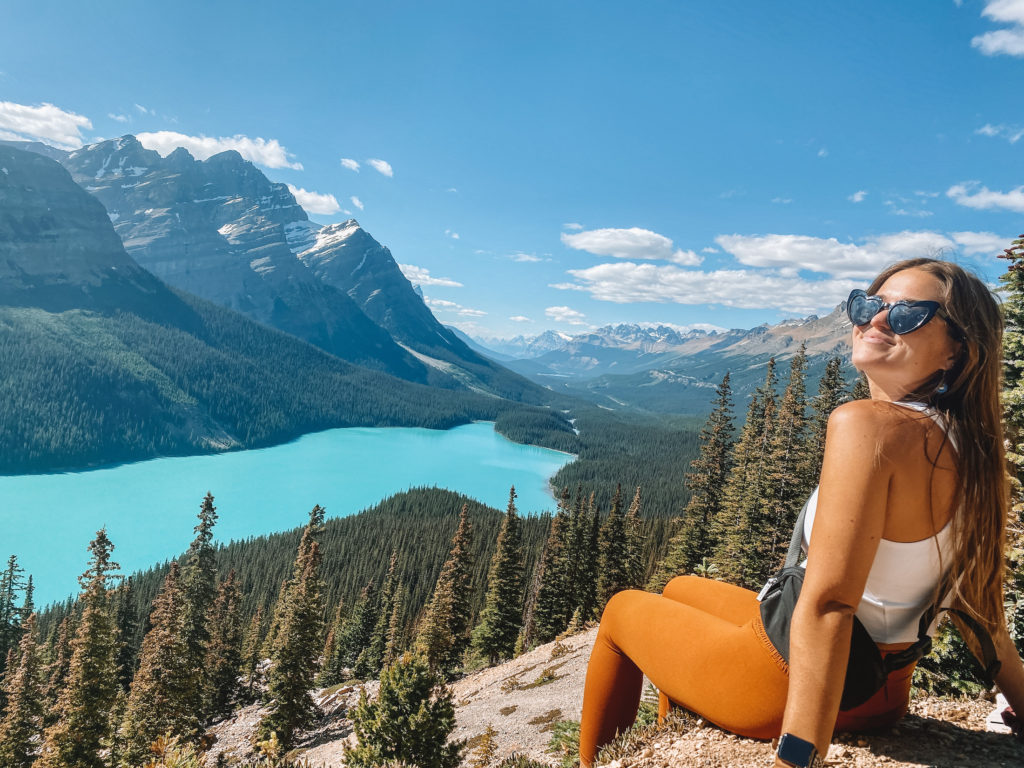
Day 3: Hiking & return to Calgary
Lake Louise
Lake Louise is less popular than Moraine Lake but just as gorgeous. The parking lot was half full around 6 am, making it a better option for people that don’t want to wake up in the middle of the night.
A short walk from the parking lot will bring you to the shores of Lake Louise. The glacier-fed lake has views of Victoria Glacier and is a bright turquoise blue color in the sun, making it a popular spot for photographers. In the summer, you can rent a canoe from the boat shed and take it for a spin around the lake (although it will cost you a pretty penny).
On the shores of the lake, you’ll find a stately building called the Fairmont Chateau Lake Louise. It was opened in 1890 and has been a Banff National Park icon ever since. Rooms aren’t cheap (they start at about $529/night!) but if you’re looking for a luxurious stay during your Banff itinerary, this is the place to go.
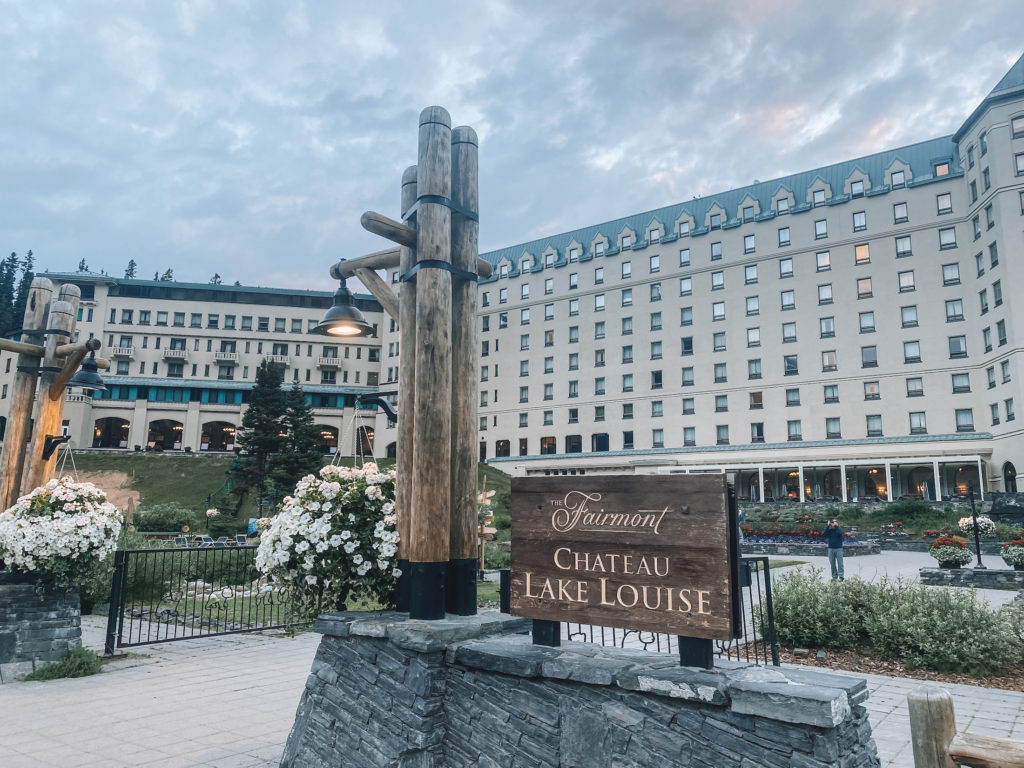

If you’re up for a bit of exercise, there are plenty of hikes to enjoy around the area. We did the Lake Agnes Trail, a 7.4 km (4.6 mi) hike that ends at the Lake Agnes Tea House. It was a very cool hike with views of Mirror Lake, Lake Agnes, and the Beehive, an oddly-shaped mountain.
If you want to extend your hike, you can continue all the way around Lake Agnes or link up to the Plain of Six Glaciers Teahouse trail. The Big Beehive trail is another popular option that has views of Lake Louise from above.
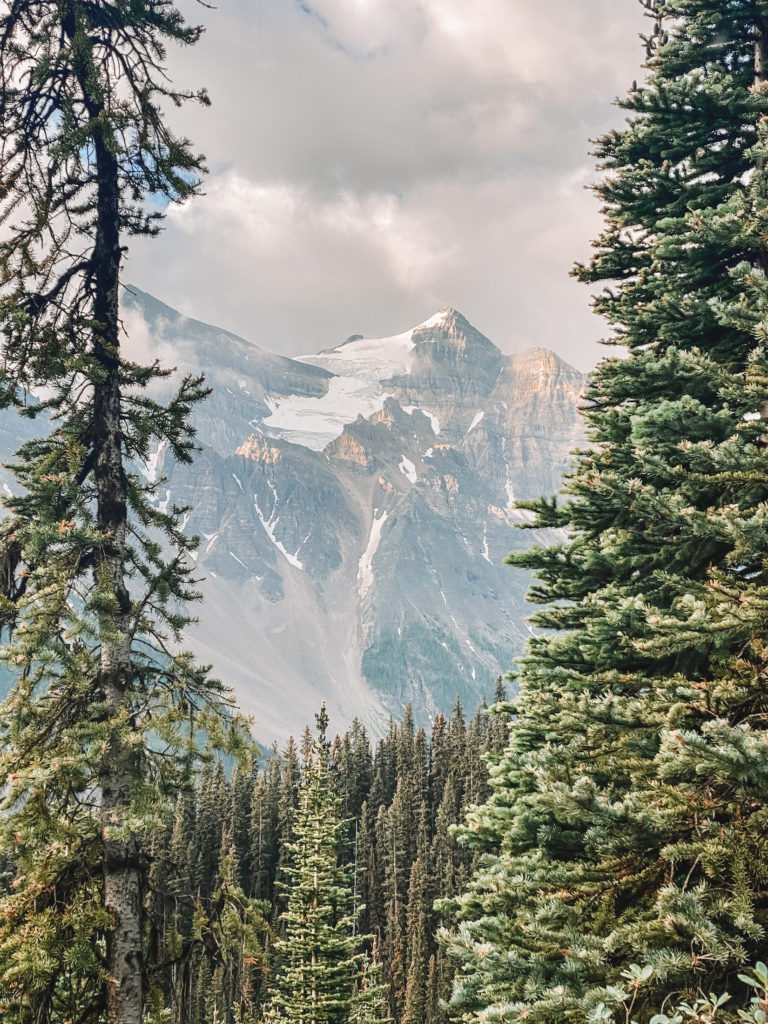
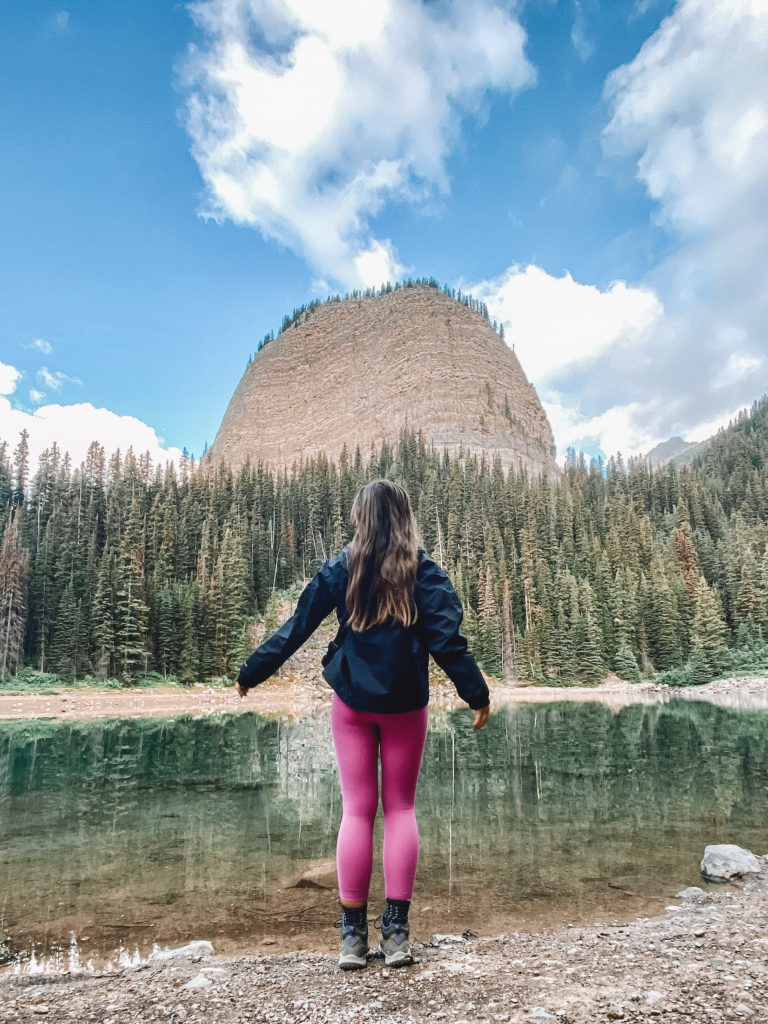
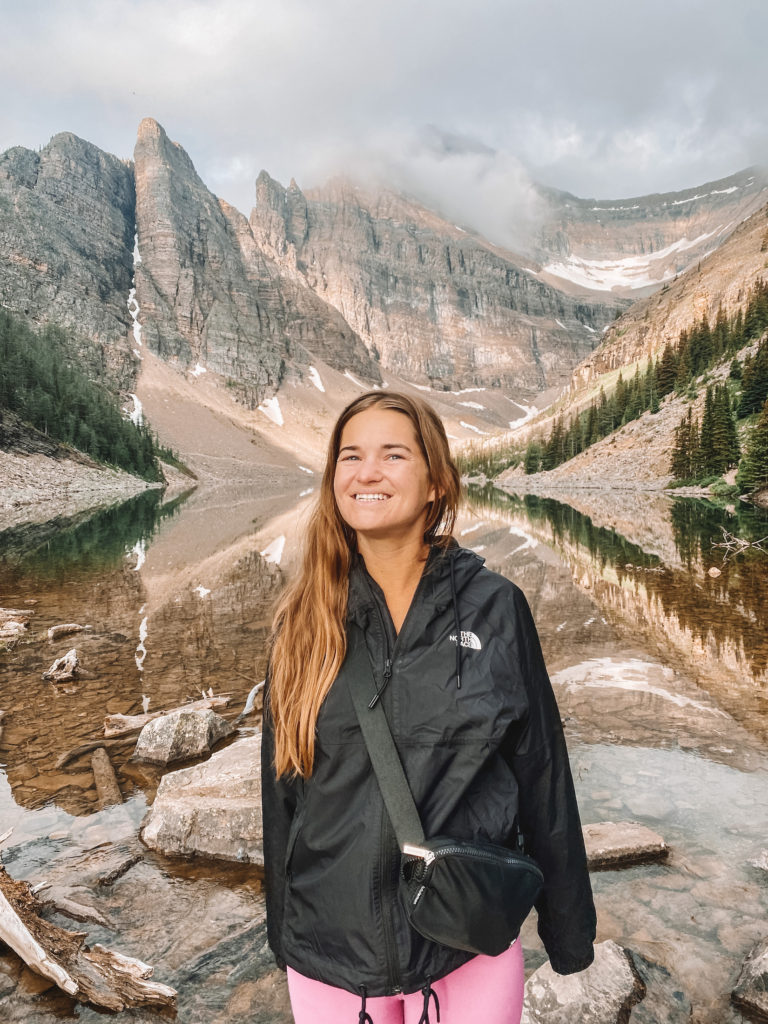
Where to stay in Banff National Park
Lake Louise area
Banff area
If you have more time on your Canadian Rockies itinerary
More time in the Canadian Rockies calls for exploration of the other 3 nearby National Parks!
Jasper National Park
- Maligne Canyon: 50 m (164 ft) tall limestone canyon with a waterfall
- Maligne Lake: Beautiful lake with an island and lots of scenic boat tours
- Pyramid Lake: Peaceful lake with picnic areas and beaches
- Miette Hot Springs: Outdoor hot springs with mineral water from the mountains
Kootenay National Park
- Boom Lake: Lake and forest only accessible via an easy hiking trail
- Stanley Glacier Trail: 11 km (6.8 mi) hike with mountain and forest views
- Marble Canyon: Slot canyon with a short walking trail
- Paint Pots: Colorful and muddy springs
Yoho National Park
- Emerald Lake: Mirrored lake with boathouse canoe rentals
- Lake O’Hara: Scenic alpine lake with several nearby hiking trails
- Takakkaw Falls: One of the tallest waterfalls in Western Canada
- Kicking Horse Pass: Mountain pass between Alberta and British Columbia; part of the Golden Triangle cycling route
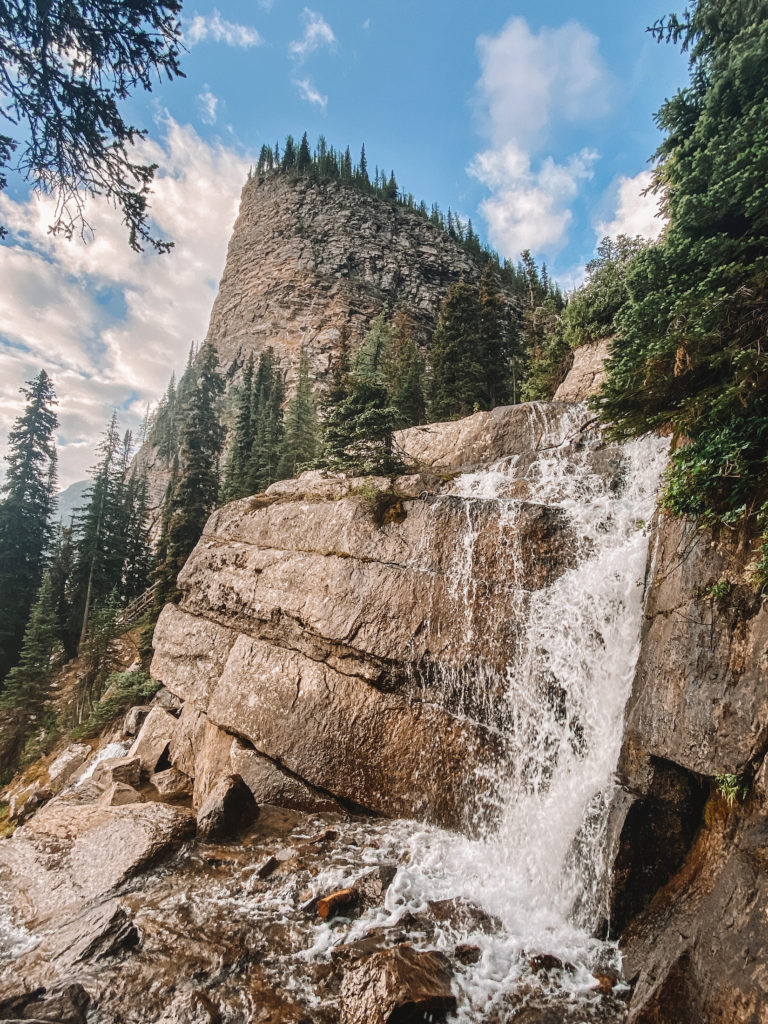
Things to know before visiting the Canadian Rockies
Parks Canada admission pass
A Parks Canada admission pass is required to stop in any of Canada’s National Parks.
The daily fees per person (as of August 2022) are:
- Adults (18-64): $10.50
- Seniors (65 and older): $9
- Youth (under 17): Free
The pass expires at 4 pm the following day. You’ll need to print out the pass in advance and put it in your car’s windshield.
If you’ll be spending more than 7 days per year in any of Canada’s National Parks, it’s worth it to get a Discovery Pass. These cost $72.25 for adults and are good for unlimited park entrances all year.
Wildlife
Wildlife sightings are common in Banff National Park — it is their home, after all! Grizzly bears, Bighorn sheep, and mountain goats roam freely around the area. If you’ll be hiking or backcountry camping, bear spray is a necessity.
This might seem obvious, but never approach or try to feed any animals you see.
Cell phone reception
Cell phone reception throughout the parks is spotty at best. It’s decent when you’re in town or at your hotel, but otherwise can be nonexistent. Make sure you have Google Maps downloaded offline to your phone. If you’re hiking, it’s also helpful to have the premium version of the AllTrails app — that way, you can find your way even without reception.
Canadian Rockies FAQ
When is the best time to visit the Canadian Rockies?
Late spring through late summer (May through September) is the most popular time to visit. Summer in particular has the best weather, but it can be extremely crowded within the park. I’d recommend visiting in spring or autumn, the shoulder seasons, for the best of both worlds.
Winter can also be a great time to visit Banff National Park. Keep in mind that it will probably be cold and snowy, so driving can be a bit hectic. All cars (and rental cars) are required to have winter tires and snow chains in the winter months.
How much time do you need in the Canadian Rockies?
Despite this post being a 3-day Canadian Rockies itinerary, I think it’s best to have at least 4 days to spend. While you can see most of the major attractions in a short amount of time, having at least 4 days gives you a better chance of having good weather and seeing wildlife.
Anywhere between one and three weeks would be the ideal amount of time to see more of the other parks as well.
What’s the best way to see the Canadian Rockies?
The best way to see the Canadian Rockies is by taking a road trip.
I might be biased, but road trips give you the ultimate freedom when traveling. You can stop when and where you want and it’s usually much cheaper than taking a guided tour. It does come with the additional task of actually planning your trip, but that’s what I’m here to help with! (haha.)
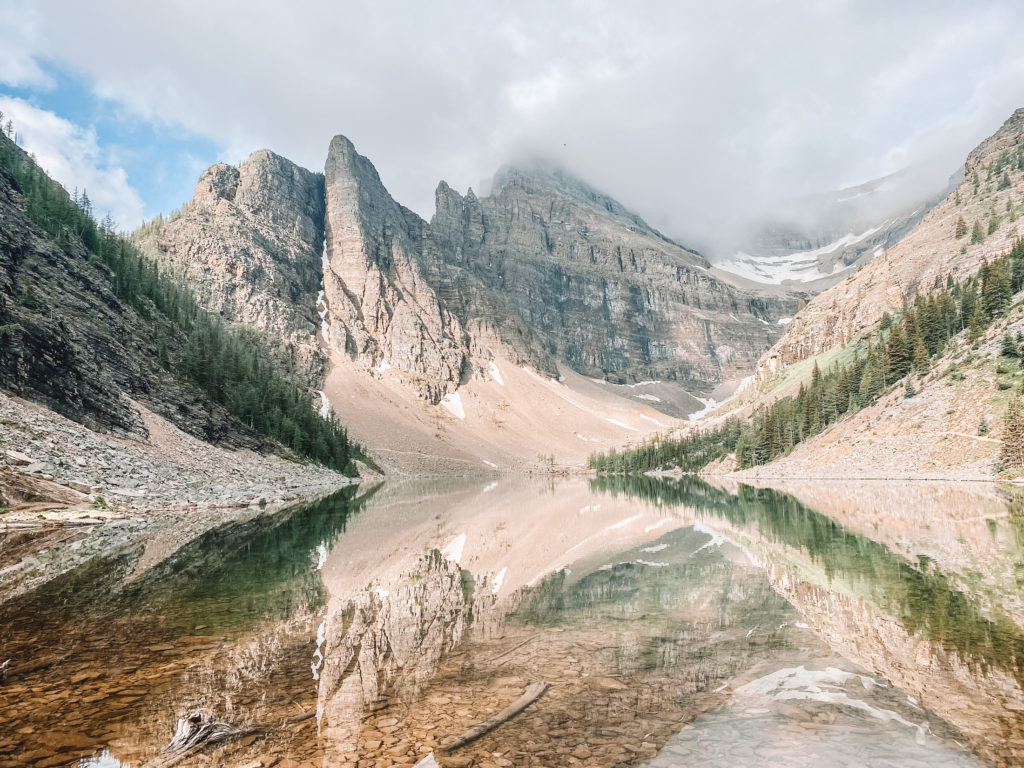
You’ll also love:
- Checking in to Hotel Uville: A Unique & Retro Stay in the Heart of Montreal
- How to Visit Chichén Itzá from Valladolid, Mexico: A Full Guide
- The Best Places to Visit on New Zealand’s South Island: A Definitive List
Thanks for reading this 3-day Canadian Rockies itinerary! It’s truly such a beautiful place that deserves more time to explore fully. I can’t wait to go back and explore the rest of the nearby National Parks!
xoxo Niki
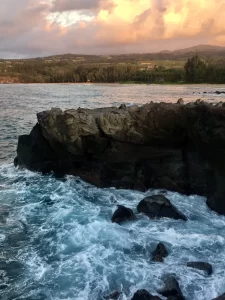
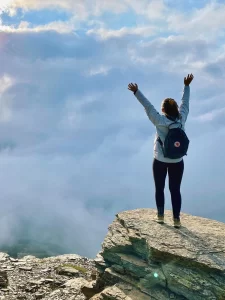
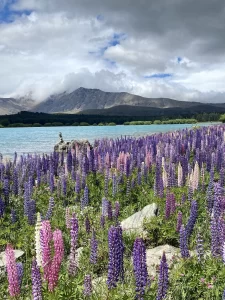
Thank you!